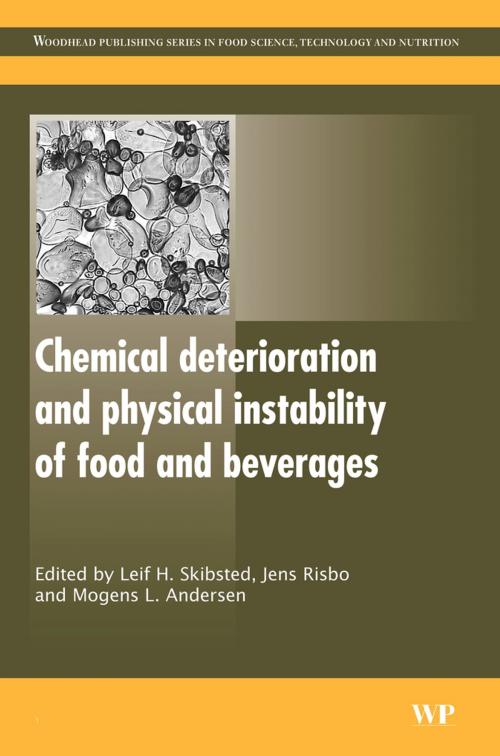Chemical Deterioration and Physical Instability of Food and Beverages
Nonfiction, Science & Nature, Technology, Food Industry & Science, Business & Finance, Industries & Professions, Industries| Author: | ISBN: | 9781845699260 | |
| Publisher: | Elsevier Science | Publication: | April 23, 2010 |
| Imprint: | Woodhead Publishing | Language: | English |
| Author: | |
| ISBN: | 9781845699260 |
| Publisher: | Elsevier Science |
| Publication: | April 23, 2010 |
| Imprint: | Woodhead Publishing |
| Language: | English |
For a food product to be a success in the marketplace it must be stable throughout its shelf-life. Quality deterioration due to chemical changes and alterations in condition due to physical instability are not always recognised, yet can be just as problematic as microbial spoilage. This book provides an authoritative review of key topics in this area.
Chapters in part one focus on the chemical reactions which can negatively affect food quality, such as oxidative rancidity, and their measurement. Part two reviews quality deterioration associated with physical changes, such as moisture loss, gain and migration, crystallization and emulsion breakdown. Contributions in the following section outline the likely effects on different foods and beverages, including bakery products, fruit and vegetables, ready-to-eat meals and wine.
With contributions from leaders in their fields, Chemical deterioration and physical instability of food and beverages is an essential reference for R&D and QA staff in the food industry and researchers with an interested in this subject.
- Examines chemical reactions which can negatively affect food quality and measurement
- Reviews quality deterioration associated with physical changes such as moisture loss, gain and migration, and crystallization
- Documents deterioration in specific food and beverage products including bakery products, frozen foods and wine
For a food product to be a success in the marketplace it must be stable throughout its shelf-life. Quality deterioration due to chemical changes and alterations in condition due to physical instability are not always recognised, yet can be just as problematic as microbial spoilage. This book provides an authoritative review of key topics in this area.
Chapters in part one focus on the chemical reactions which can negatively affect food quality, such as oxidative rancidity, and their measurement. Part two reviews quality deterioration associated with physical changes, such as moisture loss, gain and migration, crystallization and emulsion breakdown. Contributions in the following section outline the likely effects on different foods and beverages, including bakery products, fruit and vegetables, ready-to-eat meals and wine.
With contributions from leaders in their fields, Chemical deterioration and physical instability of food and beverages is an essential reference for R&D and QA staff in the food industry and researchers with an interested in this subject.
- Examines chemical reactions which can negatively affect food quality and measurement
- Reviews quality deterioration associated with physical changes such as moisture loss, gain and migration, and crystallization
- Documents deterioration in specific food and beverage products including bakery products, frozen foods and wine















